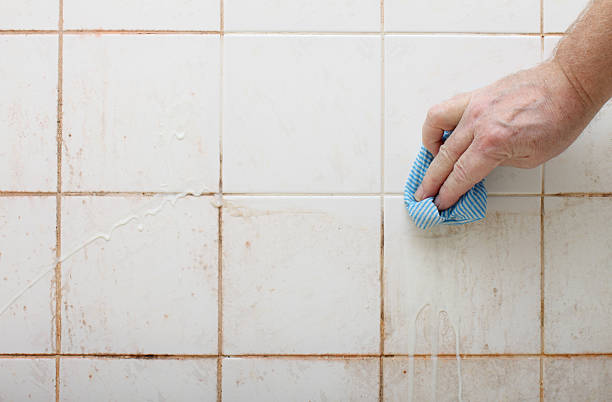Looking for a way to remove stains from tile without damaging the surface? This process can be easier than you think when you follow the right steps. In this article, we will explore effective and safe methods to clean your tiles, ensuring that they remain in pristine condition.
Gather Your Cleaning Materials

Before diving into the actual cleaning process, it’s essential to gather all the materials you’ll need. Having the right tools handy can make the job much simpler and less time-consuming. Essential items might include:
- A soft-bristle brush
- A pH-neutral tile cleaner
- Microfiber cloths
- Baking soda
- White vinegar
- Hydrogen peroxide (optional for severe stains)
Using a soft-bristle brush rather than a harsh scourer helps prevent scratching the tile’s surface. pH-neutral cleaners are recommended because they won’t eat away at the tile material, unlike acidic or alkaline products.
Pre-Treating Stains
Once you have your materials, the next step is pre-treating the stains. This often makes the overall cleaning process more effective. Start by sprinkling baking soda over the stained area. Baking soda has mild abrasive properties, making it effective for lifting stains without causing damage. Let the baking soda sit for about 10-15 minutes to allow it to penetrate the stain.
After the baking soda has had time to work, lightly dampen a microfiber cloth with white vinegar. Using circular motions, rub the area gently. The combination of baking soda and vinegar creates a gentle fizzing action that helps break down the stain.
Scrubbing the Tiles
With the pre-treatment phase complete, it’s time to scrub the tiles. Use your soft-bristle brush and a pH-neutral cleaner. Apply a small amount of the cleaner to the stained area. Using moderate pressure, scrub the area in circular motions to avoid streaking and ensure even cleaning.
For tiles with particularly tough stains, you might consider using a solution of hydrogen peroxide. Simply mix hydrogen peroxide with water in a spray bottle and apply it to the stained area. Let it sit for a few minutes before scrubbing with your soft-bristle brush.
Rinsing and Drying
Once you have scrubbed the stained area thoroughly, the next step is to rinse it well. Use clean water and a fresh microfiber cloth to wipe away any residual cleaner and loosened stains. Rinsing is crucial because any remaining cleaner can leave a film that attracts dirt, making your tiles look dirty again very quickly.
After rinsing, use another dry microfiber cloth to dry the tiles completely. Making sure the tiles are dry can help prevent water spots and streaks from forming.
Regular Maintenance
Preventing stains from forming in the first place through regular maintenance is always better than having to remove them later. Sweep or vacuum your tiled floors regularly to remove dirt that can potentially lead to staining. Additionally, mop the tiles with a pH-neutral cleaner once a week to remove any grime or residues.
Placing doormats at entrances can also help reduce the amount of dirt and debris that get tracked onto tiled floors. By maintaining a clean environment, you can significantly reduce the likelihood of stains occurring.
Conclusion
Removing stains from tile without damaging the surface is not as daunting as it may seem. By using the right materials and techniques, you can effectively clean your tiles, leaving them looking as good as new. Remember to gather all necessary tools, pre-treat stains, scrub gently, rinse thoroughly, and maintain your tiles regularly to keep them in top shape.
FAQs
1. Can vinegar damage my tiles?
Vinegar is generally safe for most tile types, but it is best used in small amounts and diluted with water. However, avoid using vinegar on natural stone tiles like marble or travertine as it can etch the surface.
2. What should I do if the stain doesn’t come out?
If the stain persists, try using a stronger cleaning solution like hydrogen peroxide or a commercial tile cleaner specifically designed for tough stains. If necessary, consult a professional cleaner.
3. How often should I clean my tiles?
For best results, sweep or vacuum regularly (daily or weekly depending on foot traffic) and mop with a pH-neutral cleaner at least once a week.
4. Are there any stains that can’t be removed?
While most stains can be removed with proper techniques, some may be permanent, especially if they have penetrated deeply or have been left untreated for a long time. In such cases, professional cleaning might be necessary.
5. Can I use bleach on my tiles?
Bleach can be harsh and potentially damage some types of tile and grout. It’s safer to use milder cleaners like pH-neutral solutions, baking soda, and hydrogen peroxide.
